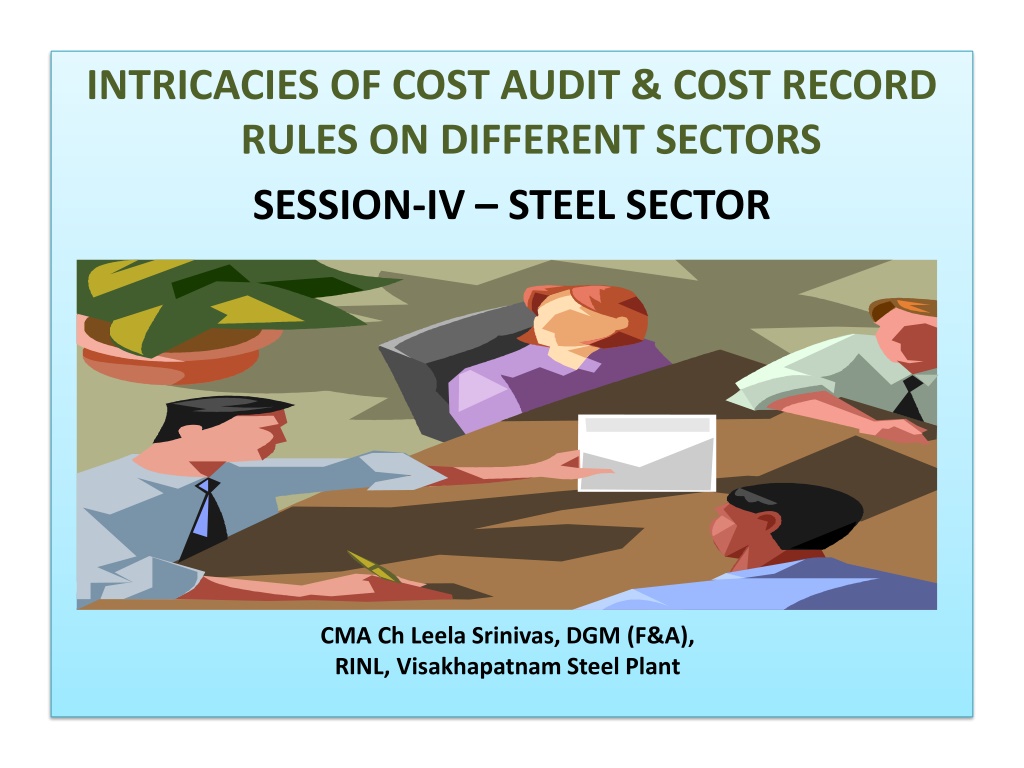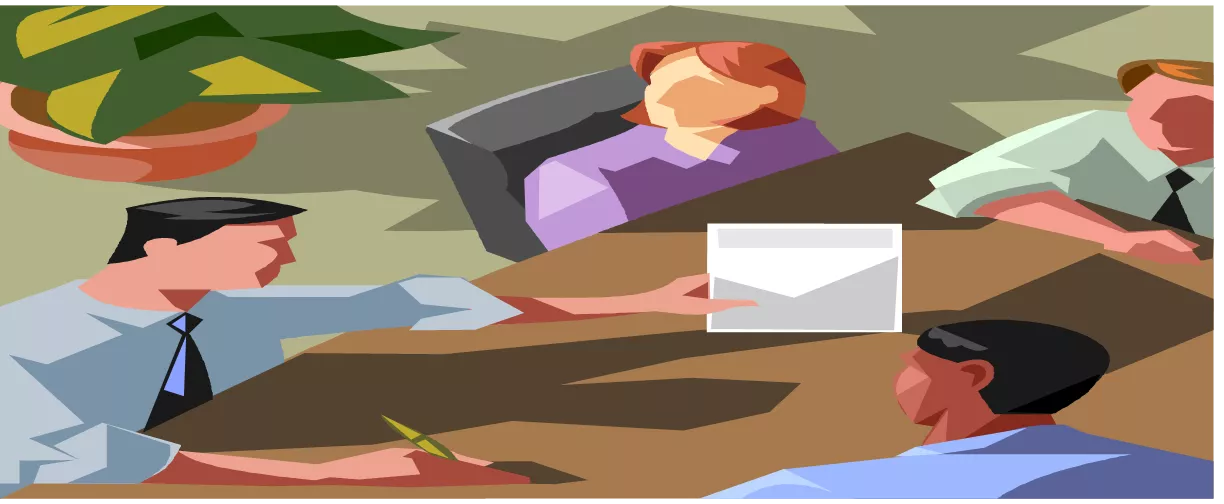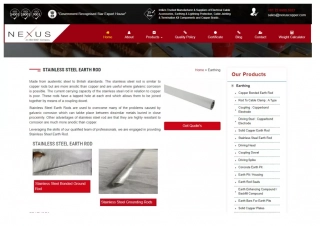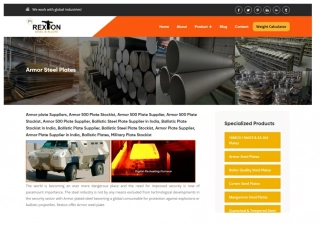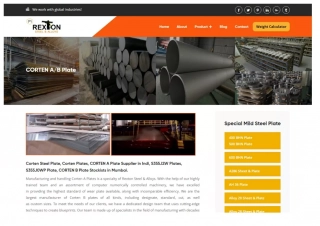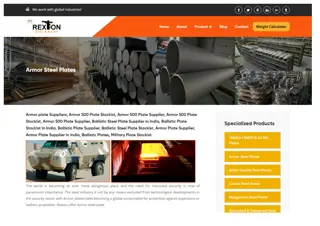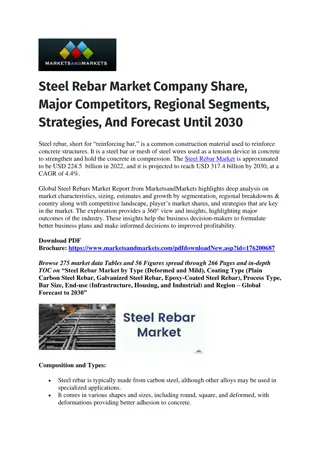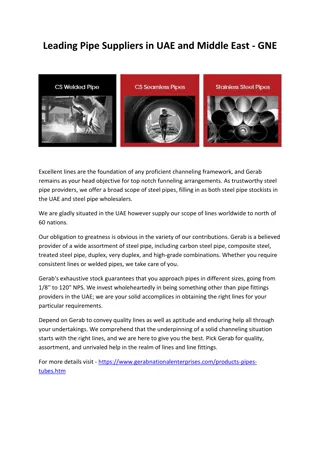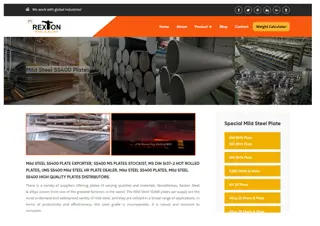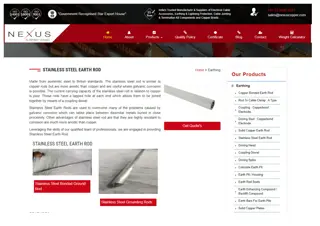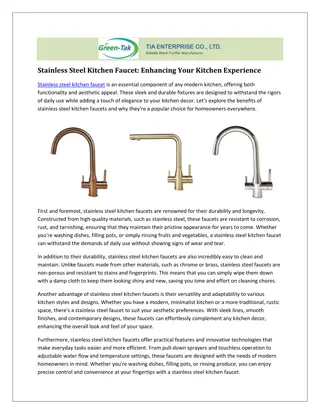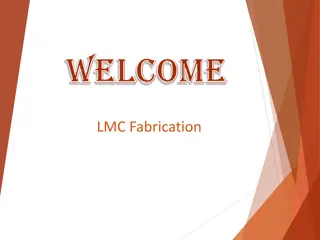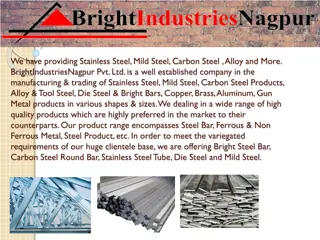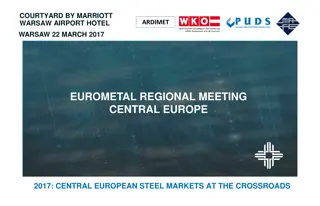Cost Audit & Cost Record Rules in Steel Sector
Explore the intricate details of cost audit and cost record rules specific to the steel sector, presented by CMA Ch. Leela Srinivas from RINL, Visakhapatnam Steel Plant. Dive into the iron and steel manufacturing process, including coke making, coal chemical processes, sinter making, and blast furnace operation overview. Gain insights into steel costing processes in ERP/SAP companies and engage in Q&A sessions to enhance your understanding of the steel industry.
Download Presentation

Please find below an Image/Link to download the presentation.
The content on the website is provided AS IS for your information and personal use only. It may not be sold, licensed, or shared on other websites without obtaining consent from the author.If you encounter any issues during the download, it is possible that the publisher has removed the file from their server.
You are allowed to download the files provided on this website for personal or commercial use, subject to the condition that they are used lawfully. All files are the property of their respective owners.
The content on the website is provided AS IS for your information and personal use only. It may not be sold, licensed, or shared on other websites without obtaining consent from the author.
E N D
Presentation Transcript
INTRICACIES OF COST AUDIT & COST RECORD RULES ON DIFFERENT SECTORS SESSION-IV STEEL SECTOR CMA Ch Leela Srinivas, DGM (F&A), RINL, Visakhapatnam Steel Plant
Plan of Presentation Iron & Steel Manufacturing Process Steel Costing Process in ERP/SAP Companies (Cost Records & Audit) Rules Steel Industry Q & A - Chatbox Mail: leelasrinivaschasetti@gmail.com Mobile & Whatsap:9490132374
Coke Making The conversion of Bituminous coal to Coke takes place by the process of carbonization, which consists of heating the coal over 1100OC in a closed chamber in absence of Air in Vertical Coke Oven Batteries. Coke is a hard and porous mass. Approximately 15 to 17 hours required for each pushing Raw CO Gas, Crude Benzol, Crude Tar, Ammonia are the by-products. Coke is sorted to BF Coke, Nut Coke, Coke Breeze and Coke Dust and Coke Sludge. 40 ATA Steam is collected in Coke Dry Cooling Plant and is used for generating Electricity through Back Pressure Turbine System(BPTS) Very good quality coke should have >85% fixed carbon, <10% ash, <2% volatile matter, 0.6 1.5% Sulphur and 0.04% Phosphorus. Roughly 1.8 Tons of Coal (in a blend of 55% HCC,40% SCC & 5% MCC) is required to produce 1 Ton of Coke. Coke acts as a fuel to provide heat for requirement of endothermic chemical reactions and melting of metal and slag.
Coal Chemical Process Raw CO Gas Clean CO Gas Crude Tar PITCH CRESOTE MIXURE PITCH Crude Benzol Ammonia MH PITCH BF PITCH BENZENE Ammonia Sulphate HP NAPTHALENE FRACTION Naphthalene & DN Oil TOLUENE LIGHT COAL WASH OIL TAR SOLVENT OIL SOL-110 (NON AROMATICS) PHENOL FRACTION
Sinter Making Base Mix is prepared using Iron Ore Fines, Iron Ore Slime, Sinter Returns, Metallurgical Waste, Lime Stone, Dolomite, Coke Breeze. Iron Ore Flux Sinter is made from Base Mix, Sinter Returns and Sized Iron Ore Returns Iron Ore (Fe2O3) contains 70% Fe and 30% Oxygen. Iron ore starts melting at 1100 1150 .
Operation Over- View : The Blast Furnace Process 1. The Iron Ore, Coke and Limestone, (the conveyed to the top of the Furnace. 2. The Charge is stored in Bells until the timing is right for the charge to be dropped into the Furnace. 3.Hot air is then blown through pipes called Tuyeres, to fire the mixture. 4.The Coke burns to increase the temperature in the Furnace upto 1700 C. 5. The Limestone attracts the impurities in the Iron Ore and forms Slag and become fully liquid at 1350 1400 C This Slag is lighter than the molten Iron and so floats on top of it. 6. As the Furnace fills, the molten Iron is Tapped off. The Slag is also tapped off at regular intervals. 7. Most Iron is taken straight from the Blast Furnace to the Steel Mill, but some is poured into buckets called Pigs. This Iron is called Pig Iron and is used to make Cast Iron. Top Gas Mains Charge), is Top Bins Above Burden Probe Throat Armour Temperature Probe Refractory Lining Sub Burden Probe Bustle Main Tuyeres Hearth Refractories 7
Process flow Integrated Steel Pant Raw materials Ferro Alloys, Aluminum for Grade of Steel added a) b) c) d) Coke Sinter Sized Iron Ore Lime Stone Oxygen Bar Mill WRM Hot Metal Liquid Steel Crude Steel Blooms/Billets for sale Slag Pig Iron Converter Caster Blast Blast Furnace Furnace Strls 8
Power & Utilities Captive Power Generations:- - Thermal Power Plant Boiler Coal Based Power - Gas Based Power Plant BF Gas from BF - BPTS from Waste Gas of Coke Ovens - GETS & TRT from Blast Furnace Waste Gas Steel making requires continuous supply of power as heavy equipment have to run without hampering production. In case of internal failure, external power is used by purchase from Electricity Boards. Air Separation Plant:- - Oxygen, Nitrogen and Argon gas are required for usage in Coke ovens, Sinter Plant, Blast Furnace for enrichment. Compressed Air:-for Operation and service purpose Chilled Water Plants:- for cooling purpose Soft Water & DM Water:- for usage in Steam generations
Services -:Production Services:- -: Maintenance Services:- Air Condition Services Civil Engineering Structural Engineering Central Maintenance Electrical Central Mechanical Maint., Capital Repairs Group Calcined & Refractroy Distribution Net Work Electrical Repair Shop Engineering Services & Foundry Electro Technical Lab Field Machinery Department IT & ERP Instrumentaion Lubricants & Hydraulics Energy Management Environment Management Production Planning & Monitoring Quality Assurance & Technology Rolls & Roll shops Raw Material Management Rawmaterial Handling Plant Structural Engineering Scrap & Salvage Traffic Department Water Management
Enterprise Resource Planning (ERP) Bringing the Organization Together ERP integrates (or integrated set of IT systems)so that employees can make enterprise wide decisions by viewing enterprise wide information on all business operations (enterprise wide information) Keyword in ERP is enterprise ERP systems focus on all processes, departments and operations for the entire enterprise
Enterprise Resource Planning Enterprise Resource Planning ERP systems correlates the data generating an enterprise wide view that is consistent and real-time. It is involved in sourcing, producing and delivering a company s product Major components focus on Accounting/Finance & Controlling (FICO), Production (PP), Materials management (MM) ,Human Resources (HR), Sales & Distribution (SD) Extended components typically focus on and require interactions with customers, suppliers and business partner. Typically Internet operations are enabled. HANA, will be on Cloud basis.
Configurations in SAP Company Code Controlling Area Operating Concern Plant Sales Office House Banks Depreciation Keys OBYC settings transaction key wise
Transaction Code in SAP Is a code through which system allows to perform a specific activity on a pre-setting in the system. Example:- - F-02 GL account posting - ME21 Creation of Purchase Order - MIGO Goods Receipt against PO - MIRO Incoming Invoice against PO - FB60 Direct Vendor Invoice In HANA, instead of T-Codes, ICONs facilitated
Integrated Data Flow to FICO in SAP Whenever a user performs a transaction code, if an accounting entry is generated, the relevant FICO records are updated based on Accounting Document Document. - MIGO Used for Goods Receipt A/c Entry Inventory Debit & GR/IR A/c Credit - MIRO Used for Incoming Invoice A/c Entry - GR/IR A/c Debit & Vendor A/c Credit and Controlling
Controlling in SAP Controlling deals with Management Accounting which is an internal and integrated accounting in an organisation. Internal accounting consists of Cost Element accounting (CE), Cost Center accounting (CC), Product Costing (PC), Profitability Analysis (PA). Product costing includes accounting of costs against production orders. Materials related cost elements are posted to production orders and other cost elements are posted to cost centers. Cost center costs are transferred to cost objects like cost centers, production orders, internal orders, WBS elements based on statistical key figures (SKFs)
Controlling in SAP Materials include Raw Materials, Stores and Spares, Semi-finished goods(SFG), Finished Goods(FG) Raw Materials consumed for producing SFG,FG are directly charged to Production orders through Bill of Materials (BOM). All Raw Material issues & Utilities against each Production Order are part of BOM Production orders contain Bill of Materials (BOM) and Routing (Cost Center Activities). Conversion costs are allocated to Production orders through Routing of each Production order. Inputs for Routing are from Activities of the Cost Centers.
Production Order Production Order : A production order contains sequence of operations and each operation describes how to carry out a workstep. A production order contains all the information targeted/planned quantity of material. A production order determines the following: Which materials are used and when they are used Which Work centers assigned to cost center (operations and sub- operations are performed at work centers). Work centers are defined in PP The dates when these operations are carried out Which stock materials are required to carry out the operations Which materials and activities must be procured externally for the order The receivers to which the actual costs can be settled required for producing Contd..
Production Order (contd..) The Material consumption for the out put in a Production Order is defined as Bill of Material (BOM). The Activities required to produce the output material are defined in Routing. Cost of all BOM Materials are posted to Production Orders on confirmation of their consumption against an output through Material Management(MM) in SAP. Routing costs (Activity costs from Cost Center) are posted to Production orders at standard cost for the actual quantity confirmed. Planned production orders are for the following purposes: -To determine the planned costs for the material being manufactured based on the planned lot size of the order - To calculate the planning variances and use them to decide what production version to use - To be able to determine the production variances at a later time
Production Order (contd..) Whenever the production (GR) or consumption (GI) and Activity is confirmed against a production order, the same are valued at Standard Price and necessary entries are passed in FI to inventorise the production as well as to credit the Activity Cost Center and to debit the Production Order. Periodically the production orders status is changed to TECO/DLV Completed to enable to determine the actual Routing Costs for the production orders. Adjustment on account of change in the cost from Standard Price to Actual Price are to be carried out in FI for the respective accounts in the Inventory (if the stock of respective FG/SFG is available or to Consumption (COGM/COGS) as applicable) Subsequent price differences of input materials as per BOM are also adjusted to SFG/FG during Material Ledger process so that actual costs are determined for the particular period.
Actual Activity Costs Every period end on completion of FI Entries for expenses, MM entries for Stores Consumptions, SES for Contracts, Depreciation etc., Cost Center costs are reposted, distributed wherever necessary. Assessment iterative cycles are run for transferring Service Center costs to production cost centers and in turn production cost center costs to Activity Cost Centers. Statistical Key figures are the base for distributions and assessments. The Costs so assessed in Activity Cost Centers are divided with the actual activity quantities in units like Tons, Rolling Hours, Heats, KNM,MWH etc., to determine the Actual Activity Rate per unit. The Production Orders are revalued with these Actual Activity Rates.
Driving factors for implementing Material Ledger Driving factors for implementing Material Ledger Company want to evaluate inventories at periodic average cost. Company has a history of huge price differences/escalations paid subsequent to receipt/consumption. Current Prices for current consumptions will change due to these fluctuations. Company want to amortize these purchase and production variances over the life of the inventories. Company want to automate the process
Material Ledger features Material Ledger features Multiple Valuation - Combine the benefits of Standard Price Control for preliminary valuation and Moving Average Price Control for Balance Sheet - Enable accurate periodic valuation - Settle proportionate price variances to period end inventories - Roll up (Single and Multi Level) price variances throughout the production process and up to the Sale of Product.
Product Costing Manufacturing Cost MM: RM Cost Center 1 Cost Center2 CO- CCA BOM CO- PC Cost Center 3 Routing Act1 Production Cost Center Production orders Act2 F. Goods Inventory
The Products Cost (Steel) Overhead MATERIALS BILL OF MATERIALS (BOM) COST CENTER ACTIVITIES (ROUTING COST :Conversion Cost /Operating Cost) (Production related) WOH & GOH
Companies (Cost Records & Audit) Rules Steel Industry
Audit of Cost Records has been made mandatory since 2011-12 for Steel Plant vide Cost Audit Order No.52/26/CAB-2010 Dated.03-05- 2011 issued by Ministry of Corporate Affairs (MCA) in exercise of power under section 233b of Companies Act 1956 based on Net-worth or Turnover. Section 469 of the Companies Act, 2013 empowers the Central Government to make the rules carrying out the provisions of this Act. Section 148 of the Companies Act, 2013 empowers the Central Government to make the rules in the area of maintenance of cost records by the companies engaged in the specified industries. In exercise of the powers conferred by above sections, MCA Notified Companies (Cost Records & Audit) Rules, 2014 on 30.6.2014 & 31.12.2014 in supersession earlier rules. (1) Short Title and Commencement, (2) Definitions (3) Application of Cost Records (4) Applicability of Cost Audit (5) Maintenance of Records (6) Cost Audit
Rule 3 Table (A) Regulated Sectors (6) Rule 3 Table (B) Non Regulated Sectors (33) Records to be maintained if Turnover from all products and services is more than 35 Crs in the preceding FY Records to be maintained if Turnover from all products and services is more than 35 Crs in the preceding FY Rule 4 (1) Audit is applicable if Overall Turnover from all products and services is more than 50 Crs or more Rule 4 (2) Audit is applicable if Overall Turnover from all products and services is more than 100 Crs or more Rule 4 (1) Audit is applicable if Aggregate turnover product and service is more than 25 Crs or more Rule 4 (2) Audit is applicable if Aggregate turnover product and service is more than 35 Crs or more of Individual of Individual Rule 5 Cost Records to be maintained in Form CRA-1. No specific format for Cost Statements. Periodicity monthly, quarterly, annually. Rule 6 (2) Intimation of appointment of Cost Auditor by the Company to Central Government in Form CRA-2. Rule (4) Form of the Cost Audit Report CRA-3. Annexure to Cost Audit Report in Part-A, Part-B for Mfg Sec, Part-D Rule 6 (6) Form for filing Cost Audit Report with Central Government CRA-4
Exemptions Cost Audit shall not apply to a Company whose revenue from foreign exchange exceeds 75% of total revenue Companies operating from Special Economic Zone Companies engaged in generating electricity for captive consumption Generating Plant through Captive
Products covered for Audit in Steel Sector Industry Steel Steel Steel Steel Steel Steel Steel Steel Steel Steel Steel Steel Steel Steel Railway Railway Mineral Fuels (other than Petroleum) Mineral Fuels (other than Petroleum) Mineral Fuels (other than Petroleum) Mineral Fuels (other than Petroleum) Mineral Fuels (other than Petroleum) Mineral Fuels (other than Petroleum) Mineral Fuels (other than Petroleum) Inorganic & Organic Chemicals Inorganic & Organic Chemicals Inorganic & Organic Chemicals Inorganic & Organic Chemicals Inorganic & Organic Chemicals Fertilisers Name of the Product Pig Iron Blooms/Billets Blooms/Billets Flats Rebar Coils Plain Wire Rod Coils Plain Wire Rod Coils Forged Rounds Rebar Rounds Angles/Channels Channels Beams Angles LHB Forged Wheels Loco Forged Wheels Coking coal Crude Coal Tar Heavy Crude Benzol H.P.Naphthalene & D.N.Oil Phenol Fractions MH Pitch / PCM LSO, SOL-110 & STILL BOTTOM OIL C.G.BENZENE N.G.TOLUENE Liquid Argon Liquid Nitrogen Liquid Oxygen Ammonium Sulphate CTA Code 72011000 72071190 72071990 72111410 72131090 72139120 72139190 72141090 72142090 72149990 72161000 72163100 72163300 72164000 86071910 86071920 27011910 27060010 27071000 27074000 27075000 27081090 27079900 29022000 29023000 28042100 28043000 28044090 31022100
Installed Capacity for Manufacturing Sector In Integrated Steel Plants, upto Hot Metal stage, single product Hot Metal (Iron stage) to Liquid Steel where Grade of steel is decided by addition of Ferro Alloys. Each grade is a product (appox..100 grades) Liquid Steel is Casted in Casters for producing Crude Steel (Semi Steel i.e., Blooms of different sizes.. Sizes wise grades wise appox 500 products) Semis (Blooms) are re-heated in Furnaces of Mills, like Billets Mill,Bar Mill, Wire Rod Mills and Structural Mills. (approx..1500 products) Capacities are generally available at Hot Metal, Liquid Steel, Blooms, Billet, Bar, Wire Rod and Structural Mill level. CTA wise Capacities are not envisaged in the designs. CTA covers more than one product from different Mills based on the Chemistry of Steel like Carbon % in Steel. It is not practicable to provide Installed Capacities at CTA level and Capacity utilizations to determine. It is better to incorporate new para for reporting industry specific important Tecno-economics along with historical trends in order to assess the company s strengths and weaknesses.
CTA wise Cost Sheets Product-wise Cost sheets can be drawn from ERP/SAP data. CTA is a combination of different products. One CTA consists of different products from different Mills. The Product-wise data is to be sorted based on CTA and to be reworked for CTA wise Cost Sheets. As Steel Sector involves series of processes, CTA wise data extraction is a challenging task and time consuming and duplication of job for Cost Accountants.
Conclusions Maintenance of Cost Records and Audit are absolutely necessary for efficient resource Utilisation as well as monitoring and improving the efficiency of organisations leading to overall productivity and profitability improvement in the best interest of consumers, investors, workers and industry, and the general public. Cost audit is based on the economic principle that resources should flow into the most remunerative channels. Cost Audit measures the parameters indicating the effective efficiency in the utilization of financial, physical, human resources etc CostAudit brings out the weaknesses in the internal workings of a company and surfaces them out for the benefit of top management and other agencies for necessary action. Cost audit provides more accurate data as regards the cost of various items and the quantity of materials consumed, thus helping in the proper computation of variance and hence productivity. In a nutshell, Cost Audit covers Efficiency, Performance, and Propriety.
Q & A CMA Ch Leela Srinivas, DGM (F&A), RINL, Visakhapatnam Steel Plant Mail: leelasrinivaschasetti@gmail.com Mobile & Whatsap:9490132374
